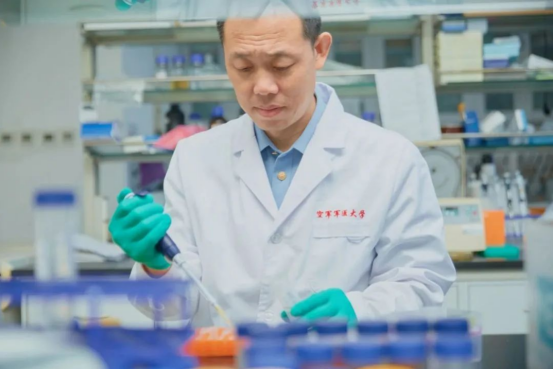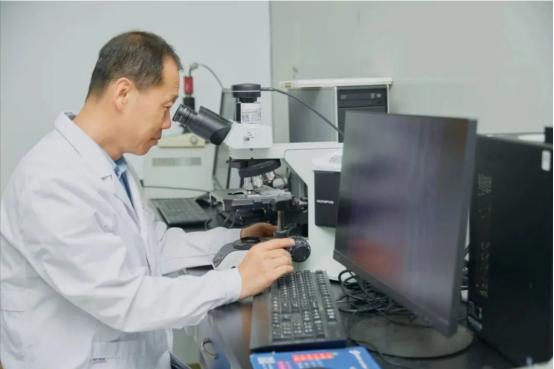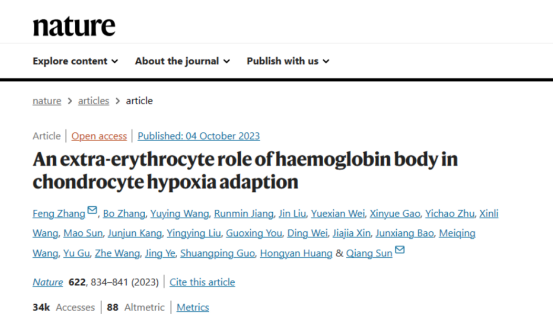Please click the button below to go to our email login page
|
Such a legend who published the first SCI 5 years after changing profession and challenged the Nobel PrizeIn the scientific research field, there is no lack of problem-finders, but people who can “slowly” push forward with and stick to research are rare and commendable. Zhang Feng is such a scientific researcher who can endure the loneliness.
No smooth scientific journey In 1994, Zhang Feng enrolled into the Clinical Medicine Science in Air Force Medical University, where he obtained master’s degree and doctoral degree. After completing PhD, he stayed in the Department of Pathology at Xijing Hospital of his university to do clinical work. In 2010, after 5 years of clinical work, he resolutely and determinedly diverted from a familiar field to a brand-new track, and joined the lab of the researcher Chen Degui, in Shanghai Institute of Biochemistry and Cell Biology, Chinese Academy of Sciences. Soon after joining the lab, Zhang Feng took over the research about Kdm6b knockdown in mice, and he thought that there may be unexpected achievements when entering a new field. Surprising findings 6 years ago, when Zhang Feng observed the cartilage tissue of a 7-year-old mouse under a microscope, he suddenly found a “biconcave” shaped like a red blood cell tightly adhering to the brown nucleus. Zhang Feng subtly considered that the cartilage tissue may have the ability to store oxygen!
After over 2 months of observation, Zhang Feng raised a question: Are hemoglobinosomes critical for chondrocyte tolerance to hypoxia? In subsequent over two years, he was devoted to finding the answer. Through knocking down hemoglobin beta subunit and other assays, he proved that suppressing the production of hemoglobin in chondrocytes can lead to metastatic disorder and excessive necrosis of chondrocytes. How are hemoglobinosomes formed? At the end of 2020, Zhang Feng cooperated with Sun Qiang from Beijing Institute of Biotechnology, Academy of Military Medical Science to conduct research. By virtue of one-year exploration, they found that chondrocytes produce massive amounts of hemoglobin and form aggresome in cells through liquid-liquid phase separation to constantly provide oxygen for chondrocytes. Meanwhile, Zhang Feng also unveiled a brand-new hypoxia-tolerance regulatory mechanism. Depending on years of efforts and dedication, this research achievement finally has been published in Nature in October 2023, and was described as “fantastic work” by the reviewers, providing new insights into pathogenesis and treatment of several kinds of arthritis.
Previously, it was thought that cells sense hypoxia through hypoxia-inducing factors (HIF), a mechanism found by 3 scientists including William Kaelin, who accordingly won the Nobel Prize in Physiology or Medicine in 2019. However, the hypoxia-tolerance regulatory mechanism of chondrocytes unveiled by Zhang Feng and its collaborators breaks this traditional classical theory. Holding a firm conviction and leaving no regrets He was once urged to return to clinical work, but Zhang Feng firmly thought that people at certain age need to choose a path of life and do things of their interest to avoid lifelong regrets. From the discovery of “red biconcave” to further in-depth research, during the 6 years, would he have missed this major discovery if he hadn’t been on the front lines? For this question, Zhang Feng had no answer. Dressing a white lab coat and with a straight posture, Zhang Feng sat on a small lab stool, staring intently at the microscope and concentrating on the microscopic world. |



